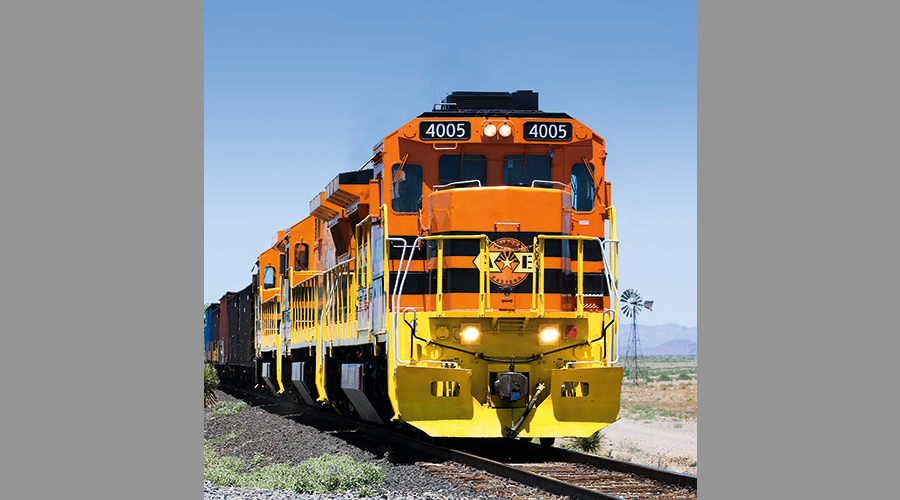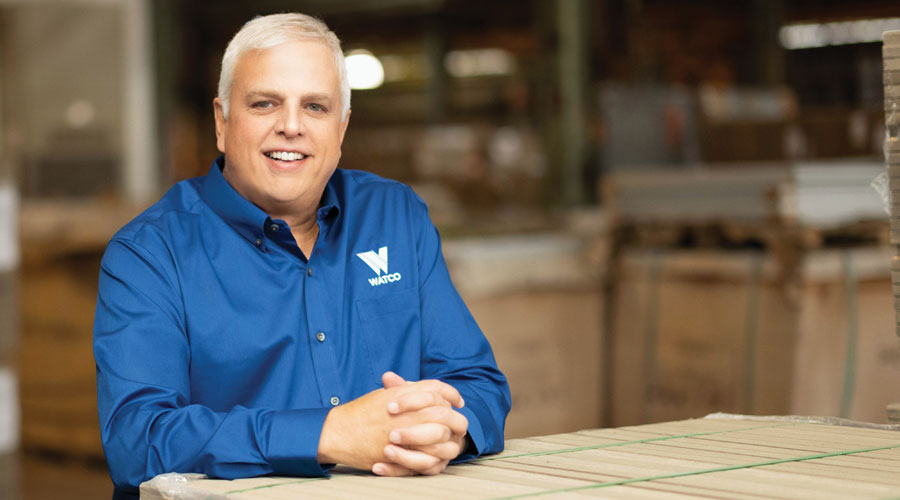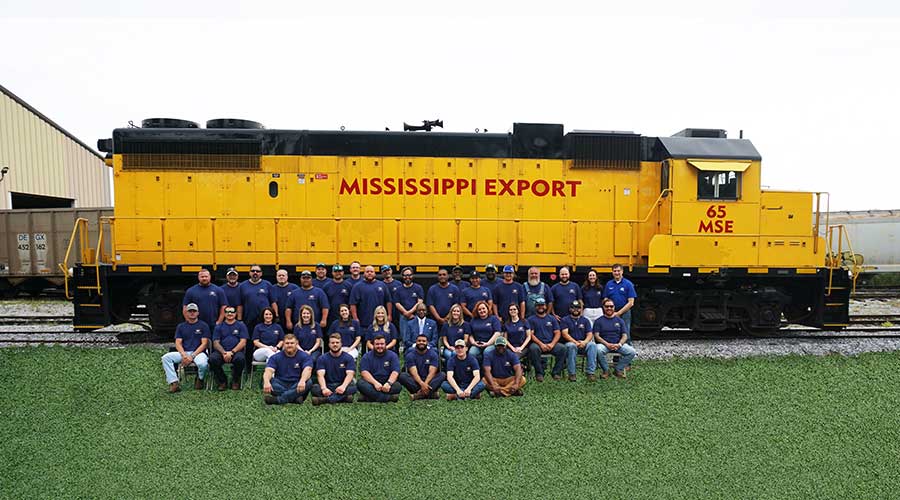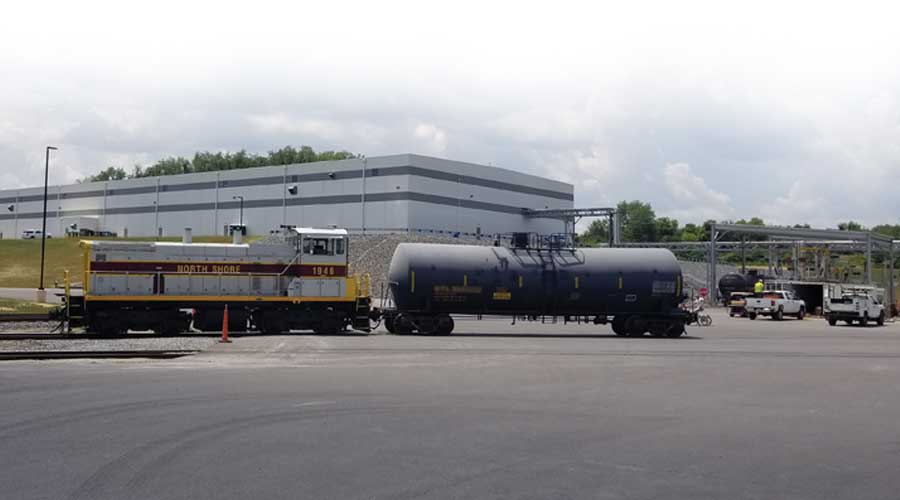Stay updated on news, articles and information for the rail industry
 railPrime
railPrime
September 2011
Rail News: Short Lines & Regionals
Mexico update: At Ferrovalle, they are thinking outside the glass box
— by Pat Foran, Editor
The pursuit of next-level railroading is alive and well in the Valley of Mexico's booming industrial district, home to Ferrocarril y Terminal del Valle de México S.A. de C.V. (Ferrovalle). There, a renewed focus on customer service has put a premium on information technology (IT) — and given the massive terminal railroad/intermodal facility a better shot at being a better service provider to shippers and other railroads, Ferrovalle officials believe.
Ferrovalle handles local switching and interchange traffic for Mexico's three line-haul carriers. Each — Ferrocarril Mexicano S.A. de C.V. (Ferromex), Ferrosur S.A. de C.V. and Kansas City Southern de México S.A. de C.V. (KCSM) — has a 25 percent stake in the terminal. The government holds the remaining 25 percent, a share reserved for a Mexico City passenger rail entity.
Ferrovalle also owns Mexico's largest intermodal facility, which has a current annual capacity of about 400,000 containers. Ferrovalle offers logistics, transload, warehousing, customs brokerage and a host of other services.
To an extent, Ferrovalle's leadership team has been pushing the technology envelope, albeit incrementally, since the terminal/intermodal facility was privatized in 1998. Software applications developed in-house, including a web-based container tracking system implemented in 2005, are "upgraded every year," says Isaac Franklin, Ferrovalle's director general.
But Franklin is trying to pick up the IT pace. Last year, crane operators in the terminal's intermodal yard began using Wi-Fi tablets to track containers in real time. By year's end, the cabs of Ferrovalle's 31 locomotives will be equipped with tablets, too, says Franklin, who took the terminal road's reins in August 2009.
"This is about sharing information in real time," he says, standing just inside Ferrovalle's front gate on a mid-May morning as he prepares to give a reporter a tour of his sprawling facility. "Our slogan is, 'From the black box to the glass box.'"
The Franklin-led Ferrovalle team takes the analogy a step further: They're also thinking outside that glass box.
A 'Most Innovative' Company
In the data-driven business that is railroading, transparency is crucial; customers expect it, and not just in terms of information dissemination. They expect that transparency to extend to every facet of the railroad- customer relationship. Customer-focused railroaders are partners. They're open to suggestions. Ideas. Criticism. Change.
For Franklin, a top priority is convincing customers — intermodal shippers and Mexico's three largest railroads — that Ferrovalle is transparent, that the road is truly customer-focused. Feedback suggests shippers are beginning to believe, Franklin says.
And Ferrovalle's railroad owners/partners already do.
"Since Isaac arrived at Ferrovalle, we've seen a very important change for the better," says Lorenzo Reyes Retana, chief operations officer for Ferromex. "Isaac has [transformed Ferrovalle into] a modern company."
Not that Ferrovalle hadn't evolved in the dozen pre-Franklin years since the Mexican government privatized Ferrocarriles Nacionales de México (FNM), the national railway system, including the terminal railroad.
Ferrovalle currently features 190 miles of main track; 200 miles of secondary track; and an additional 100 miles of ancillary track. It also comprises a 16-track receiving yard, central dispatching facility, 48-hump classification yard, and a series of auxiliary yards designed for flat switching.
"Ferrovalle has served its primary role well," says Emilio Sacristán Roy, who headed the FNM privatization process and now serves as director general of Asociación Mexicana de Empresas Ferrocarrileras A.C. (AMF), which represents the interests of Mexico's freight and passenger roads, and the suppliers that serve them.
In recent years, the Ferrovalle team developed an additional niche. A 20-person IT unit develops most of Ferrovalle's software applications. Business magazine InformationWeek México recently ranked Ferrovalle ninth among Mexico's 50 most innovative companies, citing the IT department's development of the web-based container tracking system.
"A year after implementation of the system, the company has managed to save more than 6 million pesos, and at the same time has increased revenues in receiving, storage, and merchandise warehousing, with an almost 40 percent increase in comprehensive income during 2010," according to a translation of an article posted June 23 on the publication's website.
Now, Ferrovalle plans to market logistics software to terminals worldwide. But Franklin & Co. know that terminal railroading is Job No. 1.
Since 1999, Ferrovalle has humped about 910,000 cars per year for its railroad owners, including a record 1.07 million in 2006. This year, the total should be about 920,000, Franklin says.
"We have been busy," he adds.
At Ferrovalle Intermodal, they've been busy, squared. During the year's first six months, Ferrovalle handled 154,625 containers, a 51 percent increase compared with the same 2010 period.
"The Class Is have been doing a great job selling the service — they are convincing customers to change from truck to the railroad," Franklin says, adding that he expects Ferrovalle to handle 340,000 containers this year.
To ensure Ferrovalle can handle the growth Franklin knows is coming, the terminal opened another intermodal yard in June. Another is scheduled to open in October. Combined, the two new yards will boost Ferrovalle's annual capacity to about 500,000 containers.
"The future of the Mexican railways, like the future of rail in all of North America, relies on intermodal, and Franklin has done a good job developing the intermodal terminal," AMF's Sacristán says.
There's plenty left to develop, intermodally speaking, Franklin says.
"There's still a lot that goes by truck, so we have a very large opportunity to keep growing, even with this economy right now," he says.
Serious About Security
That opportunity is why Franklin came to Ferrovalle in the first place. An industrial and systems engineer, he began his career in 1991 with building materials giant Grupo Itisa, a maker of concrete railroad ties. At Itisa, Franklin rose through the ranks, ascending to chief executive officer by the early 2000s. In 2005, he was named managing director of Poyry México, a consulting company specializing in urban development and mass transportation systems. Following a two-year stint as CEO of Impulsora Metalmecanica, he joined Ferrovalle.
"The railroad industry is amazing," says Franklin, who last year was elected chairman of the Asociación Mexicana del Transporte Intermodal — "Mexico's IANA," as he puts it. "You move cargo for the largest companies in the world, you work with state and federal governments. Every day is completely different, and you face different challenges."
Some dicier than others. As challenges go, yard and cargo security rank among the toughest for all Mexican railroads, Ferrovalle included.
"If we were serious about service, we had to improve security," Franklin says.
In March 2010, "smart" video cameras were installed along the Lechería-Teoloyucan-Huehuetoca corridor, and a real-time monitoring center was built. The center's 33 cameras enable security personnel to pinpoint license plate numbers, for example, that are 20 kilometers away, Franklin says. The railroad also implemented "virtual fences" and instituted a more stringent personnel screening process, Franklin says.
Meanwhile, Ferrovalle reached an agreement with the federal government to create a secure corridor for trucks within Ferrovalle's interior. The 6.8-kilometer route is a 10- to 15-minute drive. Previously, trucks drove an 8.4 kilometer route along Mexico City's congested and less secure streets. Travel time? Sixty to 90 minutes.
The focus on security is paying off. Since March 2010, incidents with arriving containers — "slight damage, such as vandalized seals and so forth," Franklin says — declined from 1.34 percent of all containers received to 0.26 percent as of mid-May.
"That means that 99.74 percent of the containers arrived in the same condition as they were originally shipped," Franklin says.
And since January 2010, there have been no container break-ins.
"I think the security improvements have helped the railroads to sell the service," Franklin says.
Ferromex's Reyes Retana concurs.
"Ferrovalle takes care of our [intermodal] customers, and they are much more capable with the service now than they were two years ago — that's in the surveys that we perform every six months," he says. "In a rapidly growing service, they have been able to improve. That is impressive."
Ferrovalle's own customer surveys reflect a similarly positive trend. Only 55 percent of the terminal road's customers checked "satisfied" in a 2009 survey; by 2010's end, 75 percent of them had selected it.
"We have become a very good railroad, and I am proud of what we have done, but we have to keep going," Franklin says.
Customer focus, Franklin knows, is a full-time gig. And he sets the organizational tone.
"From the top, it cascades down," he says. "I have to look at it this way: I am at the service of my employees, not the other way around."
That approach resonates with Ferrovalle's 840 employees, Reyes Retana believes.
"The people in Ferrovalle are much more focused and they are very driven. They have the feeling that they are part of something important," he says. "In the same way that Ferrosur and Ferromex and KCSM have changed, Ferrovalle has become much more customer oriented. The railroad has really improved."
The improvement will continue, Franklin vows, adding that he'll continue to tap technology that enables customers to demystify the cargo-in-transit process while empowering Ferrovalle employees to drive efficiencies.
"The days of the black box, the information black outs, are over," he says.
Keywords
Browse articles on Ferrovalle Ferrocarril y Terminal del Valle de Mexico Mexico terminal railroad terminal railroad Mexico rail Mexican railroad Mexican railway intermodal Isaac Franklin Ferromex Ferrosur KCSM Kansas City Southern railroad technology rail technology information technologyContact Progressive Railroading editorial staff.


 2025 MOW Spending Report: Passenger-rail programs
2025 MOW Spending Report: Passenger-rail programs
 Gardner steps down as Amtrak CEO
Gardner steps down as Amtrak CEO
 Guest comment: Oliver Wyman’s David Hunt
Guest comment: Oliver Wyman’s David Hunt
 Women of Influence in Rail eBook
Women of Influence in Rail eBook









